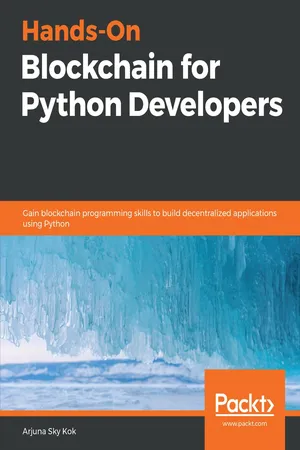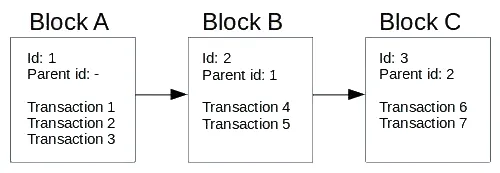
Hands-On Blockchain for Python Developers
Gain blockchain programming skills to build decentralized applications using Python
Arjuna Sky Kok
- 450 pages
- English
- ePUB (mobile friendly)
- Available on iOS & Android
Hands-On Blockchain for Python Developers
Gain blockchain programming skills to build decentralized applications using Python
Arjuna Sky Kok
About This Book
Implement real-world decentralized applications using Python, Vyper, Populus, and Ethereum
Key Features
- Stay up-to-date with everything you need to know about the blockchain ecosystem
- Implement smart contracts, wallets, and decentralized applications(DApps) using Python libraries
- Get deeper insights into storing content in a distributed storage platform
Book Description
Blockchain is seen as the main technological solution that works as a public ledger for all cryptocurrency transactions. This book serves as a practical guide to developing a full-fledged decentralized application with Python to interact with the various building blocks of blockchain applications.
Hands-On Blockchain for Python Developers starts by demonstrating how blockchain technology and cryptocurrency hashing works. You will understand the fundamentals and benefits of smart contracts such as censorship resistance and transaction accuracy. As you steadily progress, you'll go on to build smart contracts using Vyper, which has a similar syntax to Python. This experience will further help you unravel the other benefits of smart contracts, including reliable storage and backup, and efficiency. You'll also use web3.py to interact with smart contracts and leverage the power of both the web3.py and Populus framework to build decentralized applications that offer security and seamless integration with cryptocurrencies. As you explore later chapters, you'll learn how to create your own token on top of Ethereum and build a cryptocurrency wallet graphical user interface (GUI) that can handle Ethereum and Ethereum Request for Comments (ERC-20) tokens using the PySide2 library. This will enable users to seamlessly store, send, and receive digital money. Toward the end, you'll implement InterPlanetary File System (IPFS) technology in your decentralized application to provide a peer-to-peer filesystem that can store and expose media.
By the end of this book, you'll be well-versed in blockchain programming and be able to build end-to-end decentralized applications on a range of domains using Python.
What you will learn
- Understand blockchain technology and what makes it an immutable database
- Use the features of web3.py API to interact with the smart contract
- Create your own cryptocurrency and token in Ethereum using Vyper
- Use IPFS features to store content on the decentralized storage platform
- Implement a Twitter-like decentralized application with a desktop frontend
- Build decentralized applications in the shape of console, web, and desktop applications
Who this book is for
If you are a Python developer who wants to enter the world of blockchain, Hands-On Blockchain for Python Developers is for you. The book will be your go-to guide to becoming well-versed with the blockchain ecosystem and building your own decentralized applications using Python and library support.
Frequently asked questions
Information
Section 1: Blockchain and Smart Contracts
- Chapter 1, Introduction to Blockchain Programming
- Chapter 2, Smart Contract Fundamentals
- Chapter 3, Implementing Smart Contracts Using Vyper
Introduction to Blockchain Programming
- The rise of cryptocurrency and blockchain
- Blockchain technology
- Cryptography
- The hashing function
- Consensus
- Coding on the blockchain
The rise of cryptocurrency and blockchain
Blockchain technology

class Block:
id = None
history = None
parent_id = None
block_A = Block()
block_A.id = 1
block_A.history = 'Nelson likes cat'
block_B = Block()
block_B.id = 2
block_B.history = 'Marie likes dog'
block_B.parent_id = block_A.id
block_C = Block()
block_C.id = 3
block_C.history = 'Sky hates dog'
block_C.parent_id = block_B.id
block_A.history = 'Nelson hates cat'
Signing data in blockchain
- Pri...